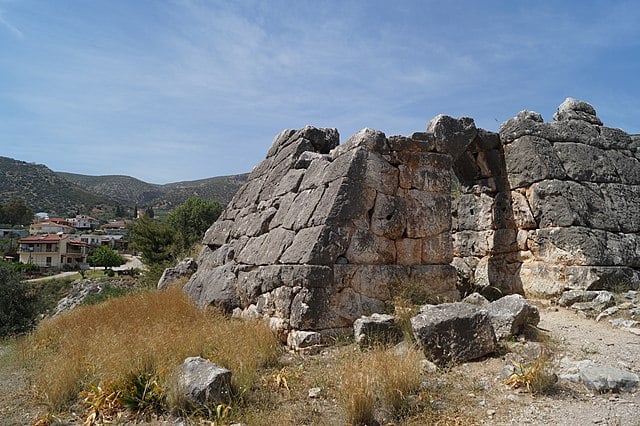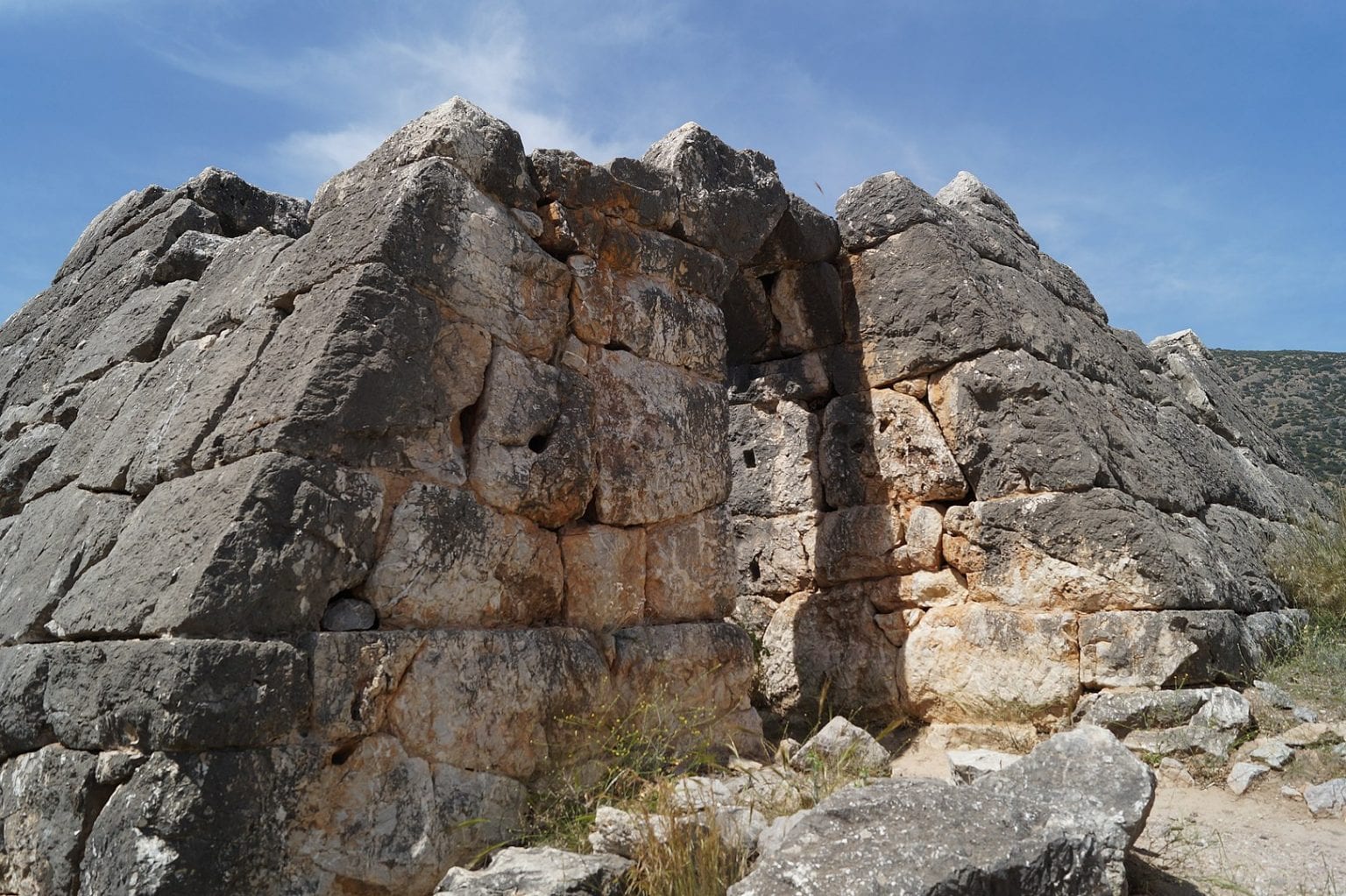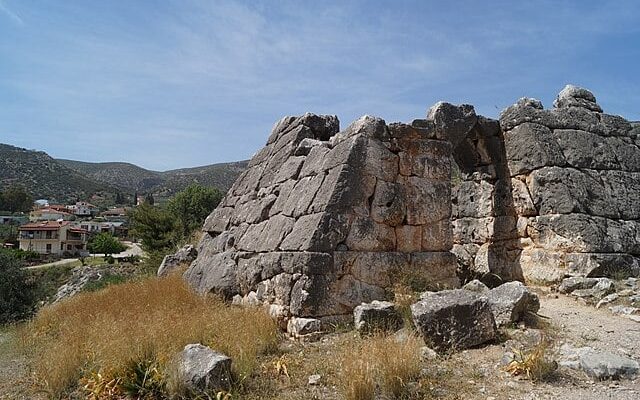
There is no other controversy like the one surrounding the ancient pyramid discovered in Greece. Ancient Greek history often stimulates meaningful debate – one has only to think of how many different views there are on the Hellinikon.
Were the Greeks building pyramids before the mighty Egyptians? And why is such a line of enquiry valid to some and unsound to others? It is time to reveal a “secret” or “mystery” not often shared.
The trouble with the story of the Hellinikon pyramid is that scholars of Greek antiquity have disputed its period and purpose. There is no agreement that the Hellinikon is a pyramid, yet fans of the archaeological site still carry on making their enthusiastic projections.
Need for the pyramid: controversy over periodization and purpose
Those committed to national chauvinism and conspiracy theories, rather than critical analysis and exchange, often fill the internet up with more hype than clarification. Such people appear to have a burning need for Hellinikon to be a pyramid. Still, rational thinkers can learn something. The challenge is, what will everyday people who take an interest in ancient Greece decide?
It is crucial to remember that the facts of the ancient world are one thing and their reception something else. That is because hundreds and thousands of years have passed since the events of antiquity were alive and unfolding.
The gathering of facts about, and interpretations of, the ancients doesn’t just fill up history books and museums. It conveys meanings for contemporary identities, cultures, and politics. Classical reception of the ancient Greeks seeks to validate authority or establish and subvert authenticity in the present. Likewise, archaeology and history also fight for meaning in the present.

Are there great mysteries associated with the Hellinikon pyramid?
Are there great mysteries associated with the ancient Greek “pyramid” named Hellinikon? Does this result from a lack of clarity around the historical function the ruins served in antiquity and their archaeological dating? Or is the puzzle a product of a more contemporary controversy?
When world audiences consider Ancient Greece, pyramids don’t often come to mind. This is partially due to the fact the world associates them with the ones in Ancient Egypt that are still quite majestic. Then, many ancient societies all over the world have built some type of pyramid as well, including in China, Mexico, Peru, Cambodia, and even the indigenous peoples within the present borders of the U.S..
Yet, creative studies of the ancients have suggested that Egyptians and Greeks in antiquity sojourned in the Americas. So we find similar structures all over the world. We might find similar structures from Greeks or Egyptians each migrating to the other’s land, except that what is observed at Hellinikon is paltry compared to what remains today in Egypt.
On the road from Argolis to Tegea
In Argolis, presently a nice vacation destination set above the sea on the southeast side of the Peloponnese an hour west of Athens, there is history and mythology to consider. Mentioned in the Iliad as one of the nations that sent ships to war against Troy, led by its King Diomedes, this coastal region takes its name from the great and ancient city of Argos. The Pyramid of Hellenikon itself is located on the main arterial road, which in antiquity led from Argos to Tegea, now home to an award-winning archaeology museum.
Some researchers and archaeologists believe there are older secrets on the peninsula. Far outside the walls of the great city, there are the ruins of pyramids which some argue were built over five thousand years ago.
Controversy about the date of Hellinikon
Another point of contention is the construction date of Hellinikon, with one theory placing it in the 4th century B.C.
In 1991, the physics professor Ioannis Lirintzis and the archeologist Adamantios Sampson, along with their team, conducted a new method of analysis called thermoluminescence dating. Liritzis’ specialty is the application of natural sciences to archaeology and cultural heritage. The results of their study contradicted what was previously believed, placing the pyramid’s construction around 3,000 BC.
Mary Lefkowitz, the prominent professor of classics, objected to the Liritzis/Sampson research findings. She argued that the rocks used for the construction of the pyramid might have been recycled from buildings of a previous era, and that research done in 1930 and confirmed in 1980 by archeologist Helena Fracchia was ignored.
Furthermore, Lefkowitz has theorized that Liritzis’ and Sampson’s team had an interpretation of history in mind during the course of their work, and merely wished to prove they were right. In response, Liritzis and company declared that Lefkowitz simply did not understand the science of their dating methods.
Ministry of Culture’s statement: The Hellinikon Is (Not) a Pyramid?
The Greek Ministry of Culture felt the need to make a 2017 statement on what they perhaps felt about the ongoing confusion Lirtzis and Sampson had caused – if not among scholars, at least among the grassroots who had taken an interest in their research. Surprisingly, under the heading ‘The Hellinikon Pyramid’, they called into question whether in fact it is a pyramid at all.
The official statement was as follows: “At the Southeastern edge of the plain of Argolid, near the springs of the Erasinos river (nowadays ‘Kephalari’) and on the main arterial road… there is a small fort at present known as the ‘pyramid’ of Hellenikon.” As one can see, they obviously felt the need to place pyramid in quotes and continue to do so throughout the announcement.
“According to evidence from the excavations and the typical features of the structure which dates to the end of the 4th century B.C. and not to the prehistoric period, as some scientists have been recently willing to demonstrate…”
“During the later years of Antiquity, the ‘Pyramid’ was considered a burial monument, a ‘polyandreion.’ While nowadays there is no doubt that it was a fort of the type of small strong-holds which controlled the arterial roads, and which are known from other regions of the Argolid.”
The Ministry, in essence, was trying to insist that it is not a pyramid. Instead, they simply refer to it as either a fort or a monument. More interesting, nevertheless, is their affirmation that dating the Hellenikon in prehistoric times was implausible.
“This impressive monument is built entirely from the gray limestone of the district with large blocks in a trapezoidal and partially polygonal system.”
The 2017 Ministry statement continued: “Excavations of the monument whose stone structure had remained stable for 2400 years, were undertaken by Wiegand in 1901, but mostly by Lord in 1938. Both published the results of their excavations in specific monograph[s].” Meaning, here are other scholars whose findings have been neglected.
Mystery and credibility surrounding the Ancient Greek pyramid
Now when it comes to questionable internet sources on Hellinikon, we have to evaluate what we read on digital media carefully, and not just accept what we are presented with. When ‘mysterious’ is emphasized in every paragraph, for instance, we have to begin to question the credibility of the sources and claims.
Made of unpolished stone and much more primitive than the stunning Egyptian pyramids, these Greek structures are nothing new. They were known in antiquity, although it seems the ancient historians were as unsure as contemporary scholars of their purpose.
Greek geographer Pausanias in the 2nd century AD characterizes them as tombs. Still, many doubt this. The truth is, their purpose to this day is unclear to those who take scholarly inquiry seriously. Some recent scholars have even suggested Hellinikon was a beacon or fort of some kind.
Ancient Greek pyramid ruins in several places around Greece
The different ancient “pyramids” that exist in Greece are Ligourio in Epidaurus, Kambia in Nea Epidaurus, Amfio near Thebes, Sikyon in Corinthia, Dalamanara in Epidaurus, Viglafia in Neapoli, and the Hellenikon Pyramid in Hellenikon.
While the Ancient Greek pyramid Hellinikon is supposedly the best-preserved pyramid, Kambia is too to some extent. Only the foundations of the pyramids at Ligourio and Viglafia presently exist and even fewer fragments of the structures at Sikyon and Dalamanara.
In addition to these structures, there are two other singular ones referred to as pyramid-like buildings. The first is the Rock Pyramid forming the peak of Mt. Taygetus, a natural formation. Nevertheless Mount Taygetus’ pyramid-shaped peak has also caused controversy as to whether or not it occurred naturally.
The second is the entirely different cone-like pyramid found in Chania. The pyramid is relatively small, with the rectangular building that surrounds it being only 7m by 9m (23 feet by 30 feet). What is left of the external walls rises up 3.5 m (11 feet) at 60 degrees angle and the whole monument is made up of grey limestone.
Looking again at the Liritzis/Sampson Team’s method
Thermo-luminescence dating, similar to carbon dating but for crystalline structures such as stone, is what the Liritzis/Sampson team used.
According to the findings, the pyramid was built around 3,000 BC. Later, as per the research conducted by the University of Edinburgh and the Academy of Athens, the date of construction of the pyramid was reframed to 2,720 BCE. The method that was used appears scientifically correct. However, it is yet to be corroborated and cross-checked with other existing methods.
If these dates are correct, then the pyramid of Hellinikon (if it is a pyramid) is older than Egypt’s pyramid of Zoser. Zoser is known as the oldest pyramid in Egypt, older even than the great pyramids of Giza (Kufu, Khafra, and Menkaure).
The Hellinikon’s purpose
Pausanias’ guess aside, the actual purpose or use of the Ancient Greek pyramid of Hellenikon is not known. No clues remain that definitively explain why such structures were built on the Greek plains, though that does not stop scholars and observers from speculating.
There are a number of ideas relating to the potential use of the pyramids. According to one notion, the Hellenikon pyramid was a military base or marks the site at which a battle took place once, to honor those who died.
Various other archaeologists also suggest that the pyramid of Hellinikon could be a memorial of sorts, but differ as to what is being memorialized. On a more practical level, it could also be an observation-communication tower that was used for controlling the surrounding area. Some others even suggest that the pyramid was used for sending smoke signals.
Fort, ritual center, communications center, burial place, or pyramid?
Yet another possible use of the pyramid was as a ritual center for worshipping the warriors and heroes of ancient times. This aligns most closely with Pausanias, who believed the pyramid was mainly used as a common tomb for soldiers.
Hellinikon has certainly sparked a great deal of debate. Little remains, but what does remain makes us curious. Whether older than the Egyptian pyramids or simply built in antiquity, the structures are an enduring tabula rasa. Nonetheless, can they be a mere blank slate on which everyone projects what they wish?
Why is the pyramid not in history and archaeology textbooks?
Why is the pyramid of Hellinikon not mentioned in updated textbooks on Ancient Greek History and Archaeology for Anglo-American audiences? This tells us consensus among scholars is not established.
If it is a great discovery and so important a resource, why does it seem that the excavation of the pyramid of Hellinikon has been suspended? Why do writers about the Hellinikon and other Greek pyramids constantly speak of “secrets” these sites hold?
Scholarly observers find there is a tone of conspiracy theory around these sites. Fanatics about Ancient Greece with religion on their mind are animated by this story. Are elements of far-right political thinking gathering around this story? An aspect of Greek or greater Hellas nationalism would like to somehow supersede Egypt’s antiquity.
Why does it matter what nation possesses the first pyramid?
Does it really matter if Egypt and Greece possess the oldest pyramids’ ruins? If this causes a shift in how history is framed, what might that be? Here is what is at stake.
Archaeologists firmly established that the first humans emerged in Africa. Those who insist on the discredited theory of polygenesis believe in a plurality of races (that there are three, five, or eight) that existed in a hierarchy. Humans developed discretely and independently from one another. Some wish to establish their inherent superiority by wielding claims on ancient history.
How old are the Egyptian Pyramids?
The oldest of the great pyramids, the most recognizable and enduring legacy of the great Egyptian civilization, are believed to have been built from 2,500-3000 BCE. This is the period for which the Liritzis/Sampson team was gunning.
It is difficult to say why some Egyptian or Greek archaeologists are hundreds of years apart when it comes to dating the ruins, though disparate estimates occur quite often. Some date buildings from their initial construction and others from when they were completed. Thus, as Lefkowitz suggests, the recycling of older building materials can throw the dating of remains off.
Many also wonder, if the dating for these Greek ruins of Hellinikon is correct, what exactly would this change in the contemporary world?



